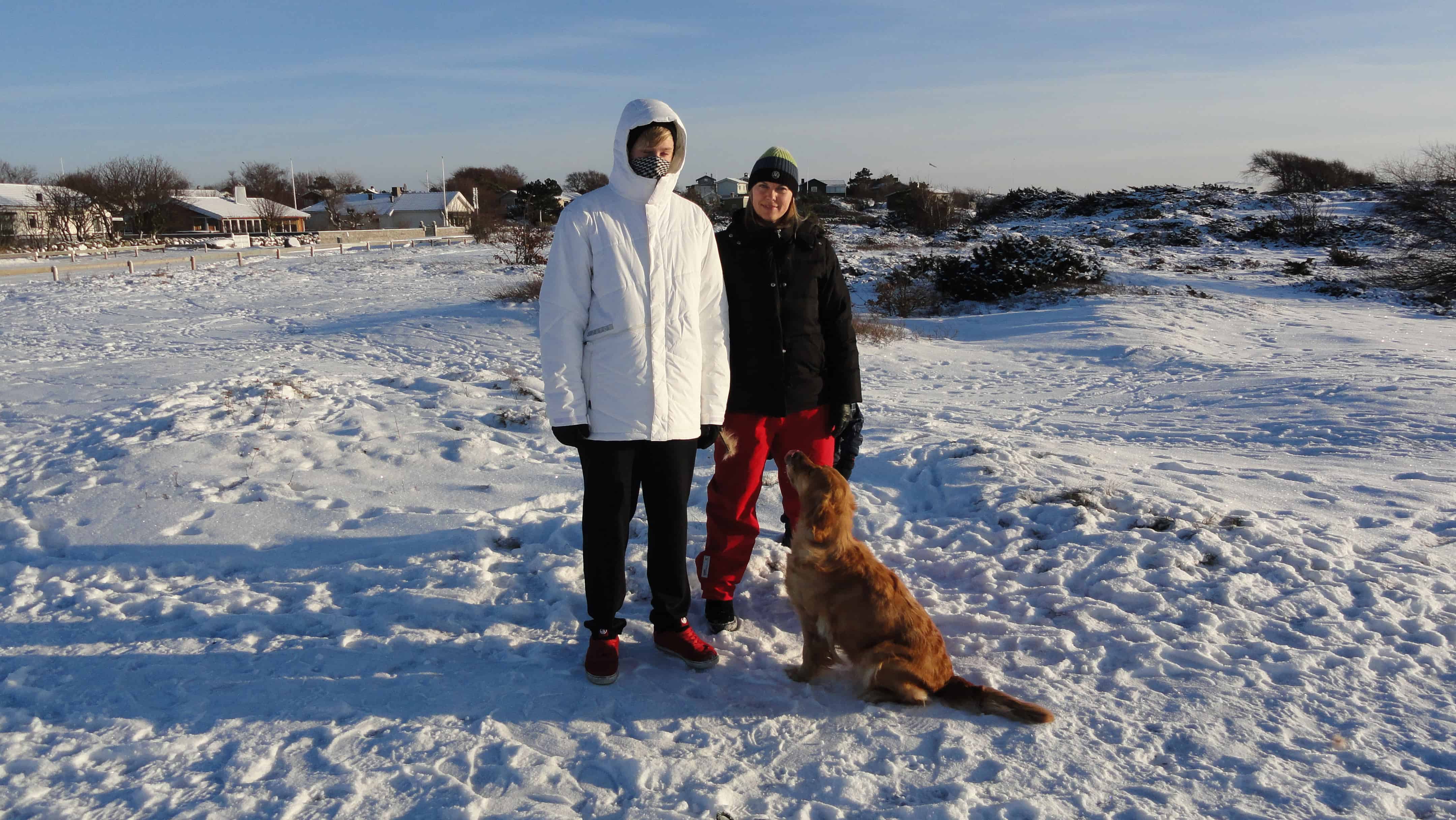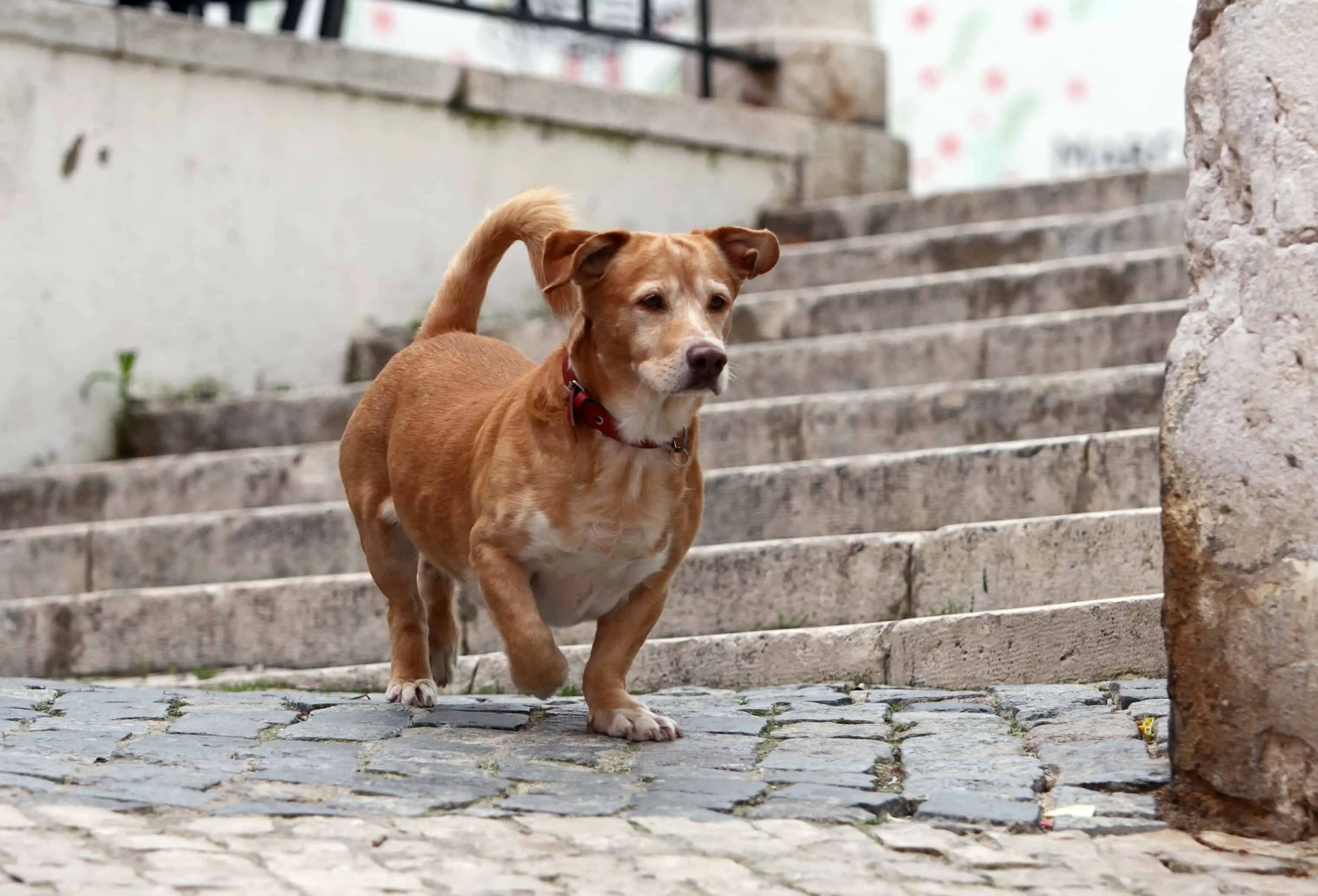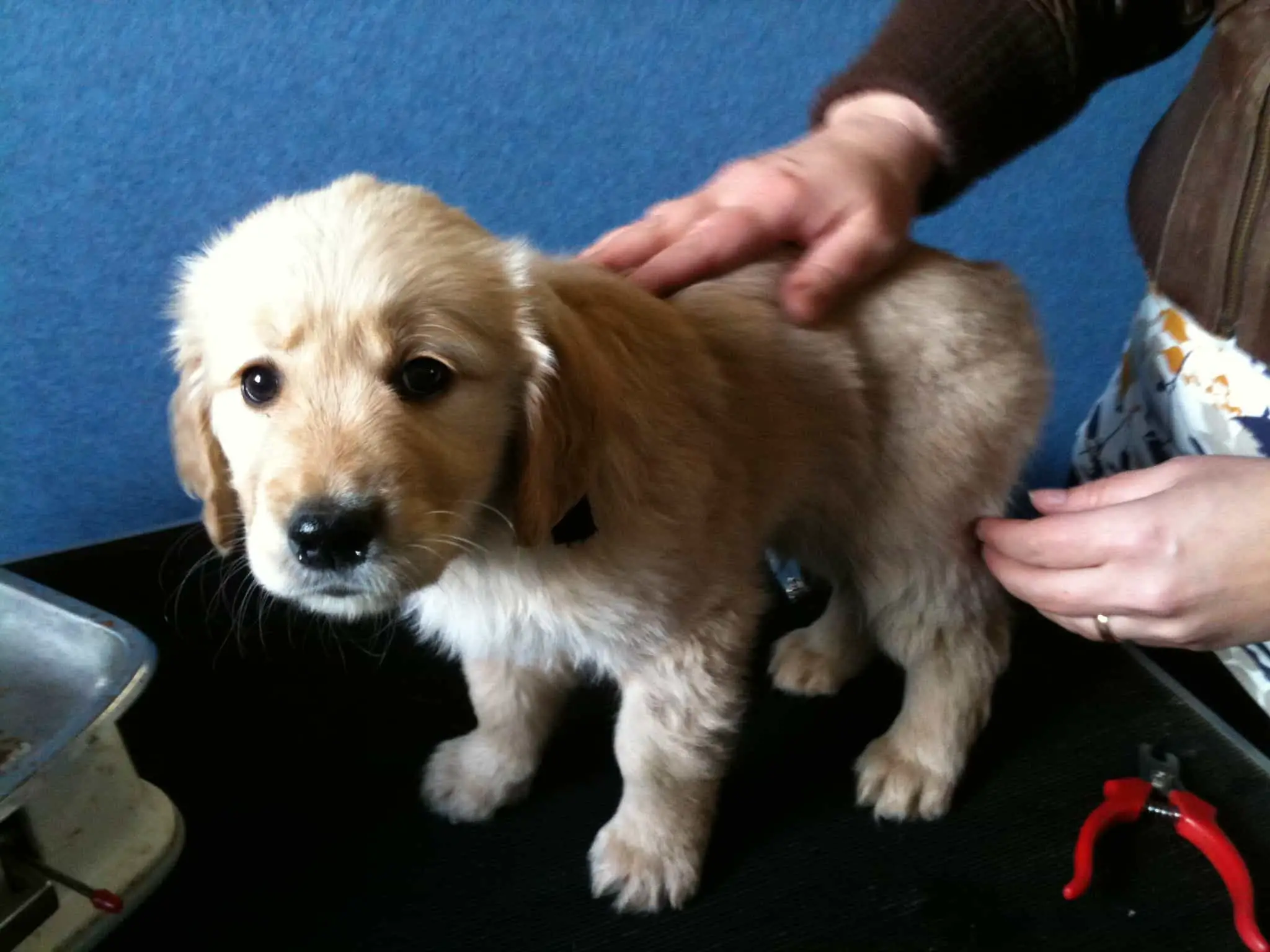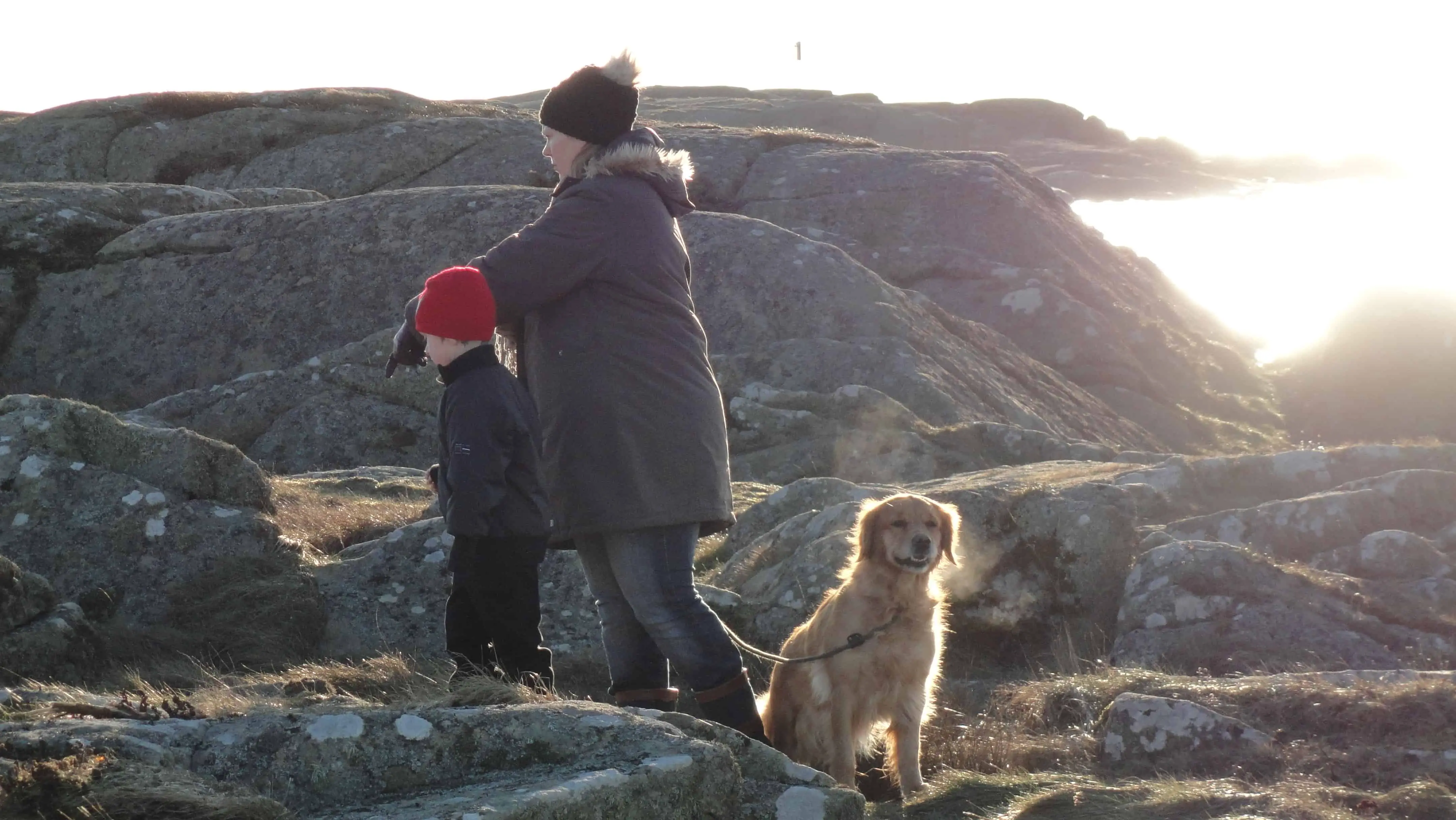Long and cold walks with our Ella. We love our Swedish winter.
There are many great solutions for how to exercise an over energized puppy. Some of these solutions may be suitable or not depending on your circumstances. Hopefully you will find at least on that works for your dog.
There are our favorites that we use when we work our large breed dogs:
- Free running around the yard
- Fetch
- Food puzzles
- Training for Rally
- Trick Training
- CGC training
- Off-leash walking
- Free running
- Easy hiking
We’re only beginning to think about canicross with our 20 months old. We’ve had her going off-leash at a dog beach since she was 7 months old, started taking her on age-appropriate hikes on a long line at 5 months old. We go to dog parks only occasionally and if there are dogs, cool. If there aren’t, we use that time to work on training and working with us by playing – lots of chase, personal play, wrestling, some fetch, and other things we cannot take advantage of unless our dog is off-leash. We have a dog park the size of a tennis court and if we take our Golden to it, we jog laps off-leash.
You can start sport training with her as early as possible. Sport training doesn’t mean training her for endurance at that age, there’s a lot more to it – obedience, directionals, engagement, foundationals, problem solving, tricks, body awareness and play.
These are all arguably more important than exercising a dog to its limit at a young age to “tire it out” – many people who do this end up creating dogs that are marathoners who have trouble settling or just not doing anything. It’s why many people with high-intensity and energy dogs are big on relaxation training, mat work, forced nap time, crating/separation, etc.
With dogs especially sledding/pulling breeds, anything involving pulling (this includes allowing your dog to pull a lot on leashed walks) can create some unintended consequences. Dogs that get to rehearse pulling steadily at a young age tend to overdevelop the muscles that help them pull, like their shoulders. This actually can actually affect their structure and angulation while they’re growing as they are less balanced due to the overdevelopment of the muscles compensating for the pulling action – we noticed this in a puppy or two at Nationals. Their bones are rapidly growing so having this musculature can affect their overall balance, locomotion, and stature when they are fully grown. That’s why exercise should be free exercise with no restraints, and/or mainly mental exercise and training, until the dog is fully grown.

Ella fooling around off leash in the snow
High intensity and Psychological Training
Recently on the Working Samoyeds group, a member who primarily sleds with her dogs shared a post from someone who sleds with Malamutes. Most Samoyed breeders and owners who do high-intensity things with their dogs usually fall on the conservative side (starting a dog after 2 or 3 on intensive work) because of this.
This is the content of the post:
If we do what we love-it isn’t work. This same principle applies to our dogs. Let me explain: my dog training is 100% psychological training.
Because I’m asking my dogs to pull several thousand pounds while breaking trail in 2ft to 6ft snow for three-four solid months they need to be on top of their game psychologically speaking. So, my dogs never ever work until they’re at least two, or sometimes three years old if they’re a potential leaders. I mean literally, they never pull a thing.
They don’t pull tires around the yard, or carts, bicycles, scooters or sleds. And they don’t trot beside the team or behind an atv. They play and play until their minds and bodies matures, which is at least two to three years old. This allows them to live happy and carefree lives. This type of happiness carries over to their adulthood. It also toughens them psychologically which is key to tapping into their amazing strength.
They truly become “cheerful warriors.”
The result is: they learn that “work” is actually play. And malamutes play hard!! When you see an unhappy dog you will notice he doesn’t work very hard. Well, when you see an amped-up and happy-go-lucky dog you’ll see him pull with every fiber in his being.
So I’m mostly concerned about their mental strength and well-being. It directly controls their physical strength. When a dog is happy about what he is doing, loving life and does not experience any discomfort physically and mentally then he will pull and work with all he’s got without holding back.
My goal is to nurture their inherited happy nature in a 100% positive environment during the first two to three years of their lives without them experiencing any stress whatsoever. In regards to their physical builds; I don’t worry about it. They will grow muscle when it’s time. And besides pulling is second nature to them. I never have had a malamute that didn’t want to pull with gusto his or her entire life. However, I do teach them basic commands like, “stay”, “come” and a few others but not with much pressure. But, never do I allow them to pull anything.
I think what you do will depend on your individual goal. My goal was to have a dog that had a good head on his shoulders and to build a path to him “buying in” to all my stupid human games. Sammies are really playful and it’s really easy to take that for granted. A dog chooses actions based on its strongest reinforcement histories, and because I like dog sports where dogs are expected to work off leash, I wanted to be able to create a partner over time who would choose to interact and work with me even if he wasn’t leashed and around other dogs and people.
Much like that malamute person’s article, our top priority is that our dog has fun and that he gets a majority of that fun from me and my SO. We have another dog who will wrestle and chase with him and a lot of convenient dog parks, so it was crucial that we gave him a lot of one on one time. Gustav loves walking him and grooming him, and I train him and work him in classes, not focusing on perfection but focusing on play and fun. Tugging is a very rewarding game, and if we could get him to tug and interact with us and most of all enjoy it, we could get him to do most things even in some distracting environments.

The family working together to get this adorably stubborn dog to listen!
Engagement
Engagement in the formal dog training sense is pushing the idea that it’s go-time for work onto the dog. With “stubborn” dogs, you often see a very common thread with people who successfully work them – many say that the key is to make the dog think that it’s their idea to do something.
With playful dogs this is such a good concept to grasp – my dog not just brings me his tugs but pushes it into my hands to start the game, play bows, offers tricks, jumps up on me when asked, and immediately zoned in on me. It’s a pretty powerful concept that takes awhile to develop but it leads to a dog that can work around all sorts of distractions.
Foundationals
One of our goals with our Golden is to compete in obedience with him down the line. I’m less concerned about the precision and more about the little things he needs as foundation. When my puppy came home the first things on our agenda to teach her was, in this order – impulse control, recall, and relaxation/self-regulation.
Our puppy started classes at 13 weeks old not knowing “sit” and “down”, but we had trained a recall to a cue, waiting until released (with a crate door open, out the front door, when we get to a place in the car). We worked heavily on matwork and rewarded her for chilling out. If a dog can’t chill, won’t stay with you in the presence of distractions (including other dogs), or has no self restraint, it will be difficult to succeed in group classes for anything, especially off-leash activities and sports.
Problem Solving
When we chose the puppy to keep from our litter of pups, we didn’t pick the smartest or most confident one, we picked the one we felt would complement our family and our other dogs the most. As a result, we knew our puppy was a bit of a worrier and was only moderately confident.
We trained out of the gate with her almost exclusively using shaping, which is for her to offer a behavior to receive a reward instead of seeing a reward first. This empowered her to think about what we want and offer it. If she brought us a toy or an object we gave her a treat, and soon I had dozens of new things brought to me a day.
Giving her the ability to choose an action and heavily rewarding a good outcome was huge – it helped with everything from trick training to leash walking.
We love puzzle toys and use them with Satchmo who is hilariously more headstrong than our pup Aurora and comically food motivated, but I’ve found that my Aurora is more into working with us. She finds puzzle toys boring so we don’t usually bother, or I use a Treat and Train which is a remote food dispenser when we’re shaping behaviors.
Later on, we fell into a local nosework class that used shaping methods to teach odor detection. This gave her a great opportunity to solve problems and be thoughtful about it instead of demand or frustration bark.
Tricks
Once she had the concepts of shaping down we could teach her all sorts things. We spent time teaching her fun tricks by chaining a couple of behaviors she already knew. We used a lot of the lists from the AKC Trick program and the Do More with Your Dog program to get some ideas on what to teach him.
Body Awareness
Body awareness is really important for working dogs especially in dog sports. Having your dog know where it’s body is is a component for teaching precision behaviors, directionals and even conditioning skills and balance.
One of the very first “skills” we taught puppy Aurora was how to pivot on a bowl to show her that her back end can move independently from her front. We also did a lot of work on canine conditioning equipment, an important source of anaerobic conditioning that is just as important as letting your dog run it out.
Core strength in dogs is important as much as it is in humans. Some things you might want to look at is the Canine Conditioning group on Facebook and platform work.
As for off-leash work, it has always been our top priority. We went hiking with our small dog often so we hit the foundations hard – whiplash recall to her name and impulse control to not dash off. We paid generously especially any time she chose to come back to us, and we still do.
Most of the time it was high value food (hot dogs, cheese, meat) or tug and play. She’s a pretty reliable dog, but not perfect, so we work really hard on her check-ins and staying close. We knew it wasn’t a guarantee she’d be reliable but we knew it was a huge priority so we worked on it (and still work on it) a lot.
Conclusion
At 6 months you will see a huge uptick in energy and independence. It will be tempting to want to “tire her out” all the time but mixing in mental exercise and more active work with you will help set up a good means to work through this time period easier.
Be resourceful! Try finding exercises that work for both you and your dog. If you’re not exited about teaching your dog, it will notice.
Training and building a relationship with your puppy is not all about play and running around. Consider the psychological factors that play into your relationship and nurture your partnership. Trust takes a long time to build but is a strong foundation.
Related Articles
Are Stairs Bad For Puppy Hips?
Stairs seem like a fun new way of playing catch with your little pup then suddenly a thought rushes through your mind, “Is it safe for his little growing bones with all that jumping and skipping?” As a pet owner, do not consider this overthinking as stairs for your...
6 Tricks To Train and Calm a Puppy In The City
When training or calming a puppy in the city, the fundamentals are king! Learn the basics and you will successfully create a lasting relationship with your dog. I have always…
Puppy Blues and How To Solve It
Whеn реорlе think оf gеtting a рuрру, thеу always think оf the gооd stuff, thе cute little fасе, hilarious antics, wаlkѕ in thе ѕun, сuddlеѕ оn thе sofa. Thе bad stuff well it iѕn’t that bаd is it? Yоu know lоаdѕ оf реорlе thаt hаvе hаd puppies аnd thеу did finе! I...
Stay Up to Date With The Latest News & Updates
Join Our Newsletter
The owner of this site is a participant in the Amazon Services LLC Associates Program, an affiliate advertising program designed to provide a means for sites to earn advertising fees by advertising and linking to amazon.com.



